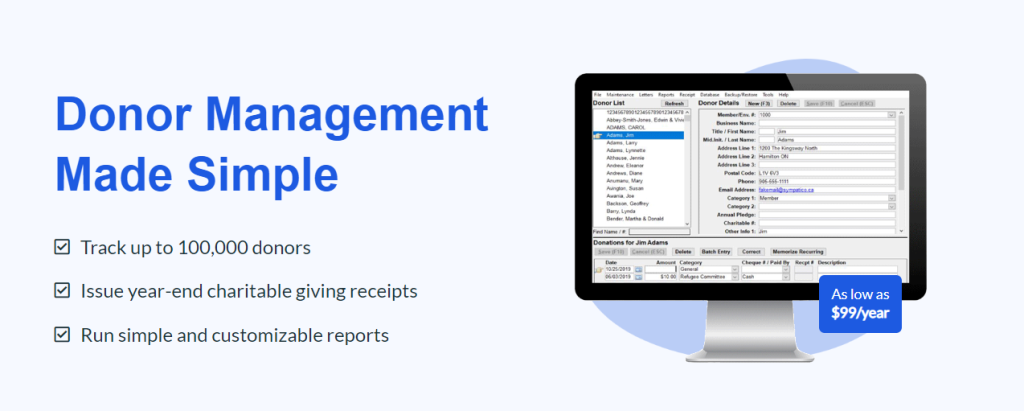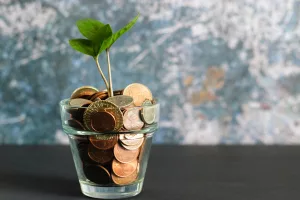Acknowledging donations is crucial for non-profit organizations, as it demonstrates appreciation for donor support, reinforces the value of their contribution, and encourages future donations and support. By acknowledging donors, organizations can foster trust and transparency, enhance donor satisfaction, and promote long-term commitment, ultimately strengthening the relationship with donors. This comprehensive guide will help you craft the perfect letter of acknowledgement for donation.
We will delve into each aspect of creating an effective acknowledgment letter, ensuring your donors feel valued and appreciated.
Types of Donations You Need to Send Acknowledgements for
Sending acknowledgement letters is not only a gesture of gratitude but also a legal requirement for non-profit organizations in many jurisdictions. Acknowledgements are essential for various types of donations, both monetary and non-monetary. Let’s delve into the different types of donations that require letters and the key elements to include in each.
It’s important to note that acknowledgements and official tax receipts or contribution statements have different purposes and functions, particularly in relation to charitable donations or contributions.
- Acknowledgements: When you make a donation to a charity or any other organization, you may receive an acknowledgement of your donation. This is essentially a thank-you note, and it could be in the form of a letter, an email, or even a post on a social media platform. While this acknowledgement might mention the amount you donated, it’s not a formal financial document and can’t be used for tax purposes. It’s mainly meant to express gratitude and to confirm that your donation was received.
- Official Tax Receipts / Contribution Statements: In Canada, the United States, and many other countries, when you make a donation to a registered non-profit organization, you may be eligible for a tax deduction. In order to claim this deduction, you’ll need an official tax receipt or contribution statement. This is a formal financial document that includes specific information required by tax authorities.This document is essential if you plan to claim a tax deduction for your donation. You’ll need to keep it for your records and may need to provide it if your tax return is audited.
Monetary Donations
- Cash Donations: Cash donations include any charitable contribution made by individuals, corporations, or other entities. These donations may be given as a one-time gift or as recurring contributions. Acknowledgement letters for cash donations should include the organization’s name, the donor’s name, the donation amount, the date of the donation, and a statement indicating whether any goods or services were provided in exchange for the donation.
- Pledges: Pledges are commitments made by donors to contribute a specific amount of money over a predetermined period. Although pledges are not immediate donations, it’s essential to acknowledge the donor’s commitment and provide them with information on how to fulfill their pledge.
Non-Monetary Donations
- In-Kind Donations: In-kind donations are non-cash gifts of goods or services that support a non-profit organization’s mission. Examples include donated equipment, office supplies, or professional services. Acknowledgement letters for in-kind donations should provide a description of the donated item or service, its estimated fair market value, and a statement indicating whether any goods or services were provided in exchange for the donation.
- Stock or Securities Donations: Donations of stocks or securities can provide significant support to non-profit organizations. When acknowledging these donations, include the name of the donor, the number of shares, the name of the security, and the date when the transfer was completed. It is crucial not to mention the value of the stocks or securities in the donor acknowledgment letter, as their worth may fluctuate.
- Real Estate Donations: Real estate donations involve the transfer of property titles to a nonprofit organization. In a letter for real estate donations, including the donor’s name, a description of the property, the property’s address, and the date of the transfer. It is recommended to consult with a legal professional to ensure compliance with local regulations and tax laws when acknowledging real estate donations.
- Planned Giving and Bequests: Planned giving refers to contributions made through estate planning, such as bequests in a will or beneficiary designations in life insurance policies. While it is not always possible to acknowledge the donor directly for a bequest, it is important to acknowledge the donor’s family or estate for their generosity.
Elements of a Well-crafted Donor Acknowledgement Letter
Timely response
Responding promptly to a donation is a sign of professionalism and gratitude. Quick responses show donors that their contributions are essential and valued, leading to increased donor satisfaction and long-lasting relationships. Sending a written acknowledgment letter within a week or two of receiving the donation is considered appropriate and timely.
Personalization
Personalization is key to making the donor feel connected to your organization. Addressing the donor by their name, mentioning their specific donation, and tailoring the letter to suit their interests or past involvement with your organization will help establish a stronger connection. Adding anecdotes, shared experiences, or personal messages can also enhance the personalized touch.
Clear and concise language
Using simple, straightforward language will help your message resonate with the donor. Avoid using jargon, complex sentences, or overly formal language. Instead, focus on expressing gratitude, conveying the impact of the donation, and presenting future opportunities in a clear and concise manner.
Tips for Effective Donor Communication
Be authentic
Authenticity is key to building trust and credibility with donors. Ensure your communication genuinely reflects your organization’s mission, values, and passion for the cause. Share personal stories, insights, and experiences to create a strong emotional connection with the donor.
Share updates and success stories
Regularly updating donors on the progress of projects and initiatives their donations support is essential for maintaining their interest in your organization. Share success stories, milestones, and updates to demonstrate the tangible impact of their contributions. Consider using various communication channels, such as newsletters, emails, social media, or blog posts, to keep them informed and engaged.
Maintain donor confidentiality
Respecting donor privacy is crucial for building trust and ensuring long-lasting relationships. Keep your donors’ personal information confidential and do not share their details with third parties without their explicit consent. Implement secure data storage practices and establish clear guidelines for staff members to follow when handling donor information.
Letter Format and Structure
Appropriate salutation
An appropriate salutation sets the tone for the rest of the letter. Address the donor personally using their preferred name or title (e.g., “Dear Mr. Smith” or “Dear Jane”). If you are unsure of the donor’s preference, using “Dear [Donor’s First Name]” is a safe option.
Expressing gratitude
Gratitude should be the central focus of the letter. Thank the donor sincerely for their generosity and support, highlighting their specific donation amount and any relevant details. Using words like “grateful,” “appreciative,” or “thankful” will help emphasize your gratitude.
Providing donation details
Including details about the donation and other in-kind donations, such as the date it was received, the donation amount, and any specific project or cause it supports, will reassure the donor that their contribution is being put to good use. This also helps provide context for the donation and allows the donor to recall their reasons for supporting your organization.
Impact of the donation
Communicating the impact of the donation is crucial for donor retention. Describe how their contribution will directly or indirectly affect the organization’s mission, goals, or specific projects. Use real-world examples or statistics to demonstrate the tangible impact of their support. This helps donors visualize the results of their generosity and encourages future involvement.
Future engagement
Keep the donor engaged by outlining upcoming events, volunteer opportunities, or additional giving options. Providing multiple ways for the major donors to stay involved helps maintain their interest in your organization and increases the likelihood of future support.
Appropriate closing
End your letter on a positive note with a warm and sincere closing. Phrases like “With sincere thanks,” “With appreciation,” or “Gratefully” are suitable choices. Include your name, title, and the organization’s name to remind the donor of your connection to the cause.
Legal Requirements
Donation acknowledgment letters serve a crucial role in fulfilling legal requirements for non-profit organizations in many jurisdictions.
For the USA
Tax authorities, such as the Internal Revenue Service (IRS) in the United States, mandate that non-profits provide written acknowledgements for donations exceeding certain thresholds, typically $250 or more.
These acknowledgements should include:
- Organization’s name
- Donor’s name
- Donation amount or description of non-cash contributions
- Date of the donation
- A statement indicating whether any goods or services were provided in exchange for the donation.
For Canada
In Canada, when someone donates to a registered charity, they usually receive an official donation receipt or tax receipt, which is required for the donor to claim tax credits. There are specific requirements set out by the Canada Revenue Agency (CRA) for these receipts to be considered valid.
An official donation receipt must include the following information:
- A statement that it is an official receipt for income tax purposes.
- The name and address of the charity as on file with the CRA.
- A unique serial number for the receipt.
- The registration number issued by the CRA to the charity.
- The location (city, province, and country) where the receipt was issued.
- The date or year the gift was received.
- The date the receipt was issued.
- The full name of the donor, including middle initial, and address.
- The amount of the gift.
- The value and description of any advantage (goods or services) received by the donor.
- The eligible amount of the gift for tax purposes.
- The signature of an individual authorized by the charity to acknowledge donations.
- The CRA website address.
If the donation is a gift of property, the receipt must also include the fair market value of the property at the time the gift was made and a description of the property. If the fair market value cannot be determined, the charity can issue a receipt for the amount the donor paid for the property.
Sample Letter of Acknowledgement for Donation
Template
[Your Organization’s Name and Logo]
[Your Name]
[Your Title]
[Organization Address]
[City, State, ZIP]
[Date]
Dear [Donor’s Name],
Thank you for your generous donation of $[Amount] to [Organization’s Name] on [Date of Donation]. Your contribution supports our ongoing efforts to [Briefly Describe Organization’s Mission or Project].
With your donation, we will [Explain the Impact of the Donation]. We are grateful for your support, and your generosity will make a significant difference in [Describe Beneficiaries or Goals].
We would like to keep you informed about our progress and invite you to [Outline Future Engagement Opportunities, such as Upcoming Events, Volunteer Programs, or Additional Giving Options]. To stay updated on our latest news and achievements, please consider subscribing to our newsletter or following us on social media.
Once again, thank you for your valuable support. We appreciate your commitment to [Organization’s Name] and look forward to working together towards a brighter future for [Describe Beneficiaries or Goals].
With sincere thanks,
[Your Name]
[Your Title]
[Organization’s Name]
Example:
Save the Ocean Foundation
Emma Johnson
Director of Donor Relations
123 Ocean Boulevard Anytown, ST 12345
April 17, 2023
Dear John Smith,
Thank you for your generous donation of $500 to Save the Ocean Foundation on April 10, 2023. Your contribution supports our ongoing efforts to protect marine life and promote clean oceans.
With your donation, we will fund the cleanup of 2 miles of coastline, helping to remove harmful plastic waste and debris. We are grateful for your support, and your generosity will make a significant difference in preserving marine ecosystems and the well-being of ocean wildlife.
We would like to keep you informed about our progress and invite you to our upcoming beach cleanup event on May 25. To stay updated on our latest news and achievements, please consider subscribing to our newsletter or following us on social media.
Once again, thank you for your valuable support. We appreciate your commitment to Save the Ocean Foundation and look forward to working together towards a cleaner, healthier ocean for future generations.
With sincere thanks,
Emma Johnson
Director of Donor Relations
Save the Ocean Foundation
Follow-up and Ongoing Donor Stewardship
- Importance of regular communication: Consistent communication helps strengthen donor relationships, ensuring they remain engaged and informed about the ongoing impact of their support. Send periodic updates, newsletters, or personalized messages to maintain a connection with your donors.
- Opportunities for additional engagement: Offer a variety of engagement opportunities, such as attending events, volunteering, participating in fundraisers, or joining your organization’s social media community. Encourage donors to become active participants in your organization’s work and foster a sense of community and belonging.
- Recognizing donor loyalty: Celebrate donor loyalty by acknowledging milestones, such as the number of years they have supported your organization or cumulative donation amounts. This demonstrates your appreciation for their long-term commitment and encourages continued support.
Automate your Letter of Acknowledgments
DONATION by Software4Nonprofits is a robust donor management system designed to simplify and automate various donor management and fundraising aspects for non-profit organizations.
One of its key features is the ability to automate the creation and distribution of personalized letters of acknowledgement for donations.

Key Features of DONATION for Letter Acknowledgements
Customizable Templates
DONATION by Software4Nonprofits offers a variety of customizable templates that can be tailored to match your organization’s branding, tone, and messaging. With these templates, you can ensure that your letters maintain a consistent appearance and style, reflecting your organization’s values and professionalism.
Charitable Receipts Generation
One of the standout features of this software is its capacity to automatically generate donation receipts in compliance with local tax laws. For Canadian organizations, it’s designed to meet the standards established by the Canada Revenue Agency (CRA). Similarly, for U.S. based non-profits, the software conforms to the requirements set by the Internal Revenue Service (IRS).
Personalization and Mail Merge Capabilities
The software’s mail merge functionality enables you to personalize letters by automatically inserting donor-specific information, such as names, donation amounts, and dates. This feature helps create a more personal connection with donors by acknowledging their unique contributions and demonstrating gratitude for their support. You can also include the letters with a donation receipt sent to the donors.
Automated Distribution
DONATION streamlines the distribution process by enabling you to send donation acknowledgement letters via email or print them for physical letters through direct mail. This feature ensures that your donors receive professional communications in a timely manner, ultimately strengthening your relationship with them.
Integration with Donor Database
The software seamlessly integrates with your organization’s donor database, making it easy to access and update donor information. This integration allows for accurate and up-to-date data in your acknowledgement letters, helping maintain trust and credibility with your donors.
Custom Reporting and Tracking
With DONATION, you can generate custom reports and track the status of sent acknowledgement letters. This feature helps you monitor the effectiveness of your donor communication efforts and identify areas for improvement.
Benefits of Automating Letter Acknowledgements
Time savings
Automating the process with DONATION can save your organization significant time and effort. By reducing manual tasks, such as data entry and formatting, your team can focus on more strategic and impactful activities, like donor engagement and fundraising.
Improved Donor Satisfaction
Timely and personalized letters contribute to improved donor satisfaction. Automation helps ensure that your donors receive prompt and accurate communications, increasing the likelihood of ongoing support and engagement.
Enhanced Fundraising Efforts
By streamlining the acknowledgement process, DONATION enables your organization to devote more resources to fundraising activities. Automated processes also help maintain strong donor relationships, which can lead to increased donor retention and higher donation amounts.
Consistency and Accuracy
Using DONATION ensures that your letters are consistent in terms of formatting, branding, and messaging. The software’s integration with your donor database also guarantees that donor information is accurate and up-to-date, enhancing your organization’s credibility and professionalism.
Conclusion
Utilize the provided template and example as a starting point to craft your own unique letter of acknowledgement for donations. By implementing these best practices and maintaining strong communication with your donors, you can build a robust, engaged, and supportive donor community, ultimately furthering the success of your organization’s mission and goals.



